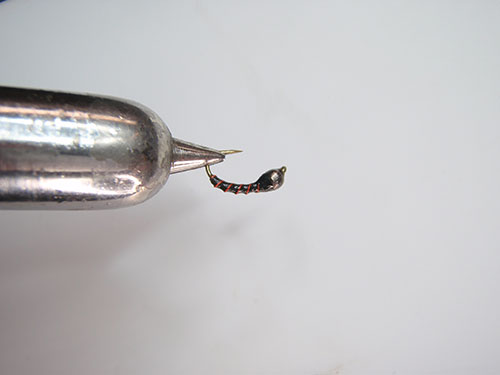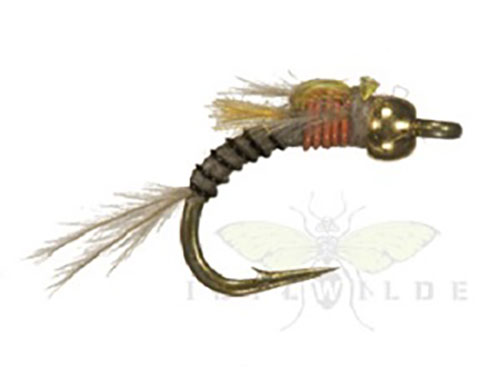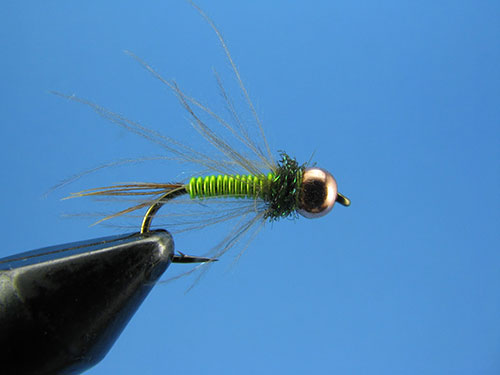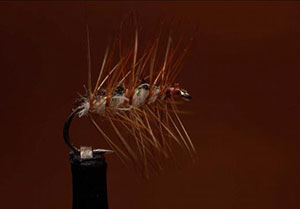Mini Sulphur Hi-Vis Comparadun
By Ted Fauceglia
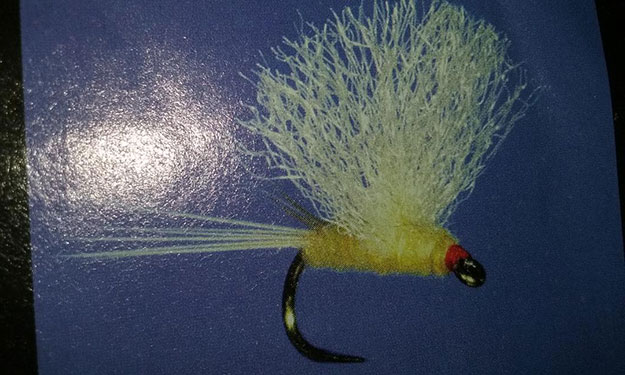
Translated by CARL WUEBBEN
For the seasoned fly fisher, preparing to meet most mayfly hatches is a relatively easy task – it’s simply a matter of reviewing last year’s log and correcting any problems associated with the previous year’s hatch. If there are none, it’s no big deal; just restock your supply of your best patterns. For fly fishers without a backlog of knowledge, it’s a little more complicated. Tying a selection of patterns for any hatch obviously requires us to choose the correct size and colors for each pattern, but it’s equally important to choose the right style of pattern that suits a particular hatch. Where on the water the hatch happens also has a direct influence on the style of pattern selected. If duns emerge in fast – flowing riffles, you’d imitate them with buoyant, hackled, high-floating patterns that remain high on the water whereas, if the duns surface in calm water or side pools, a more realistic, flush-floating pattern is appropriate because the trout will get an up close view as it drifts downstream. In addition to where the hatch occurs, the timing of the hatch raises further concerns (time of year). I have found that the simpler the pattern I use, the better. I’m a big fan of parachute patterns, but parachutes don’t lend themselves well to small dun patterns (sizes 18 and smaller). The materials overcrowd the pattern, and there simply isn’t enough definition to my satisfaction. I prefer the Comparadun style for my mini-sulphur imitations, besides matching the size and color of the natural; Comparaduns match a naturals profile and duplicate a naturals imprint on the water, which is crucial in low water conditions. As an added bonus Comparaduns are easy to tie.
PATTERN
HOOK – Tiemco 100 BL, size 18 to 20
THREAD – Light Cahill 8/0 Uni-thread (70 denier)
WING- Sulphur Hi-Vis Antron
TAIL – Stiff cream colored hackle barbs
BODY – Pale morning dun Orvis Spectrablend dry fly dubbing or ?
HEAD – Light Cahill 8/0 Uni-thread (color it red with a Copic marker or other permanent marker)
HOW TO TIE
- If using a barbed hook debarb it and mount in the vice. Start your thread in about at the mid-shank point and wrap rearward to just a little before the bend of the hook.
- Tie in the hackle for the tail (about the same size as the hook or just a bit larger). About 5 or 6 barbs should do, coming straight off the hook shank.
- Bring your thread forward to a little bit past the halfway mark on the shank and tie in your Hi-Vis Antron for the wing by laying the Antron on the top of the shank with what will be the wing part going about a hook length long (hook shank upward), and tie it down on the shank with the tips facing forward. Lay a few wraps down then clip the tag ends off (butt section). Pull the front part of the wing upward and bring your thread forward in front of the wing, then lay some wraps in front of it to keep it upward. Then fan your wing out with your fingers to get the wing to spread out from side to side like a fan. Bring your thread rearward and end it just before the bend.
- Make a dubbing loop by pulling about 2 inches of thread downward, then put a dubbing twister (tool) on the thread and then bring your thread back up to where your thread comes off the shank and tie both pieces of thread on the shank. Bring your thread forward and stop by the eyelet, then place a small amount of dubbing in between the thread loop and using your dubbing twister, spin it into a noodle or just your index finger and thumb to twist the dubbing onto the single piece of thread coming off the shank. You can use dubbing wax to help. Use small chunks, if you need more you can add more on.
- Wrap the noodle forward; when you get to the wing base do a figure 8 around the front and rear of the base to cover the bottom side below the wing and keep close to the front of the wing to help keep it upward also. Wrap all the way toward the eyelet but leave a space for the head of the fly. Tie off and clip off the tag end of the noodle.
- Take a red permanent marker and run it up and down about a 2 inch section of your thread then wrap a small head behind the hook eye. Whip finish and clip your thread, then add a very small dab of head cement.
TIE UP A DOZEN OR TWO – AND GO FISHING*** But remember to practice C.P.R. (CATCH – PICTURE – RELEASE)

